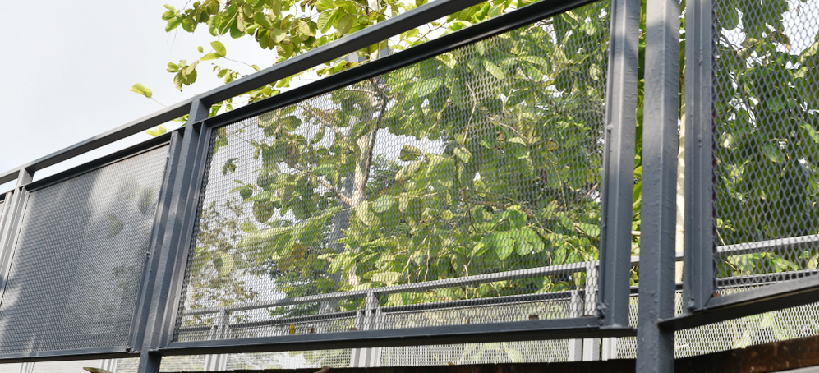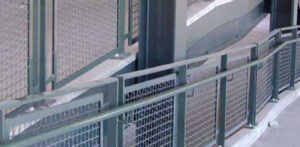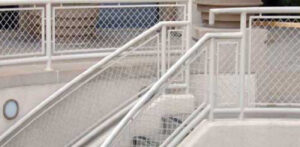
Cable Deck Railing: A Modern Alternative for Your Deck
Introduction
When it comes to choosing the perfect railing system for your deck, wire deck railing emerges as a modern and stylish alternative to traditional options. Before deciding, it’s crucial to weigh the pros and cons. This blog, brought to you by California Wire Products, will provide an in-depth look at cable deck railing, helping you make an informed choice. Read on!What is Cable Deck Railing?
Cable railing for decks consists of a series of horizontal or vertical cables, usually made from stainless steel, which are tensioned between posts. This innovative system has gained popularity due to its sleek appearance and functional benefits. Originating from nautical and industrial applications, cable railings have become a popular choice in residential and commercial properties, offering a contemporary touch to outdoor spaces.Pros of Cable Deck Railing
1. Unobstructed Views
One of the most significant advantages of cable deck railing is its unobstructed view. The slim profile of the cables minimizes visual obstruction, making it an excellent choice for homes with scenic surroundings.2. Modern Aesthetic
The sleek and contemporary look of cable railings beautifully complements modern architecture. Whether you have a minimalist deck or a chic, urban outdoor space, cable railing can enhance the overall aesthetic.3. Durability and Low Maintenance
Wire railing systems are made from high-quality materials like stainless steel, which are highly resistant to weather elements. This makes them incredibly durable and requires minimal upkeep compared to traditional wood or iron railings.4. Versatility
One of the appealing features of cable railings is their versatility. They can adapt to various deck styles and settings, from coastal homes to urban rooftops, seamlessly integrating with the existing design.5. Safety and Strength
When properly installed, cable railings provide a strong and safe barrier. They meet safety standards, ensuring that your deck is stylish and secure for all occupants.Cons of Cable Deck Railing
1. Cost
The initial investment for cable railing for decks can be higher than that for traditional materials. This is due to the quality of materials and the complexity of the installation process.2. Installation Complexity
Installing cable railings can be more complex than other systems. It often requires professional installation or advanced DIY skills, adding to the overall cost.3. Maintenance for Best Appearance
While cable railings are low maintenance, they do require regular inspections and tension adjustments to maintain their safety and aesthetics.4. Not Suitable for All Designs
The minimalist look of wire deck railing might not suit all architectural styles. For instance, rustic or classic designs might not complement the contemporary appearance of cable systems.5. Regulations and Code Compliance
Check local building codes and regulations, as some areas have restrictions regarding cable railings. Ensuring compliance is crucial to avoid potential legal issues.Installation Considerations
Installing wire railing involves several crucial steps to ensure a sturdy, safe, and visually appealing result. Here’s a detailed look at the installation process:Measuring and Spacing Posts
Accurate measurement is the foundation of a successful cable deck railing installation. Begin by measuring the total length of the area where the railing will be installed. Mark the locations for the posts, ensuring they are evenly spaced. Typically, posts are spaced no more than 4 feet apart to prevent cable sagging and maintain the railing’s structural integrity.Choosing the Right Materials
Selecting high-quality materials is essential for durability and aesthetics. Stainless steel is a popular choice for cables and fittings due to its strength and resistance to rust and corrosion. Depending on your design preference and budget, the posts can be made of stainless steel, aluminum, or wood.Drilling Holes for the Cables
Once the posts are positioned, the next step is to drill holes for the cables. Precision is key here to ensure the cables run parallel and straight. Use a drill guide or a jig to maintain consistent spacing and alignment. The holes should be slightly larger than the cable diameter to allow for easy threading while ensuring a snug fit.Threading and Tensioning the Cables
After drilling, thread the cables through the posts. Start at one end and work your way to the other, ensuring each cable is pulled tight. Proper tensioning is critical for aesthetics and safety. Overly loose cables can be hazardous, while overly tight cables can stress the posts. A tension gauge can help achieve the correct tension.Securing the End Fittings
Once the cables are threaded and tensioned, secure them with end fittings. These fittings, which can be swaged or mechanically fastened, hold the cables in place and provide the necessary tension. Ensure all fittings are securely tightened and double-check the tension on each cable.Professional Installation
Given the complexity and precision required, professional installation is often recommended. Professionals have the tools, experience, and expertise to ensure the railing is installed correctly, safely, and up to code. They can also help navigate any specific challenges your deck might present.Consulting Local Building Codes
Before starting the installation, consult local building codes and regulations. Some areas have specific requirements for deck railings, including height, spacing, and structural integrity. Ensuring compliance with these codes can prevent costly mistakes, fines, or the need for future modifications.Maintenance Tips
To keep your cable deck railing in top condition and ensure it remains a safe and attractive feature of your deck, follow these maintenance tips:Regular Cleaning
Clean the cables and posts regularly to prevent the buildup of dirt, grime, and salt (in coastal areas). Use a mild detergent and water, and avoid abrasive cleaners that could scratch the surface. For stainless steel components, consider using a stainless steel cleaner to maintain their shine and resistance to corrosion.Periodic Inspections
Regularly inspect the tension of the cables. Over time, cables may loosen due to environmental factors such as temperature changes and wind. Check each cable for proper tension and adjust as necessary using the tensioning fittings.Inspect for Wear and Damage
Look for any signs of wear or damage, such as fraying cables, rust spots, or loose fittings. Address any issues promptly to prevent further damage and maintain the safety and appearance of your railing. Replace any damaged components with high-quality replacements to ensure longevity.Lubricating Moving Parts
If your cable deck railing system includes moving parts such as turnbuckles or adjustable fittings, lubricate them periodically to ensure smooth operation. Use a lubricant recommended by the manufacturer to prevent rust and wear.Preventive Measures
To extend the lifespan of your railing, consider applying a protective coating to metal components, especially if you live in an area with harsh weather conditions. This extra layer of protection can help prevent corrosion and maintain the railing’s appearance. By following these maintenance tips, you can keep your wire railing system looking great and functioning safely for years to come. Proper care and attention will ensure that this modern, stylish feature remains a valuable addition to your outdoor space.Conclusion
Wire deck railing offers numerous benefits, including unobstructed views, modern aesthetics, durability, versatility, and safety. However, it’s essential to consider the higher cost, installation complexity, and maintenance needs. Weigh these pros and cons based on your specific needs, preferences, and local regulations. For personalized advice, consider contacting a professional like California Wire Products, who can help you make the best decision for your deck. Whether you are updating your current deck or planning a new one, cable deck railing could be the perfect choice to enhance your outdoor space with a touch of modern elegance.FAQs
FAQ 1: How does cable deck railing compare to glass railing in terms of maintenance? Answer: While both cable and glass railings offer modern aesthetics and unobstructed views, cable railings typically require less maintenance. Glass railings need frequent cleaning to remove fingerprints, smudges, and water spots, whereas cable railings require occasional tension adjustments and cleaning to remove dirt and grime. FAQ 2: Can cable deck railing be installed on an existing deck, or does it require a new structure? Answer: Cable deck railing can be installed on both new and existing decks. However, it’s essential to ensure that the existing deck structure is sturdy enough to support the tension of the cables. Consulting with a professional can help determine if any reinforcements are needed before installation. FAQ 3: Are there different design options available for cable deck railing posts? Answer: Yes, cable deck railing posts come in various materials and styles to suit different design preferences. Common materials include stainless steel, aluminum, and wood. These posts can be customized with different finishes and colors to match your deck’s aesthetic, providing both functionality and visual appeal.GET IN TOUCH
Contact us today to place your wire mesh order!


